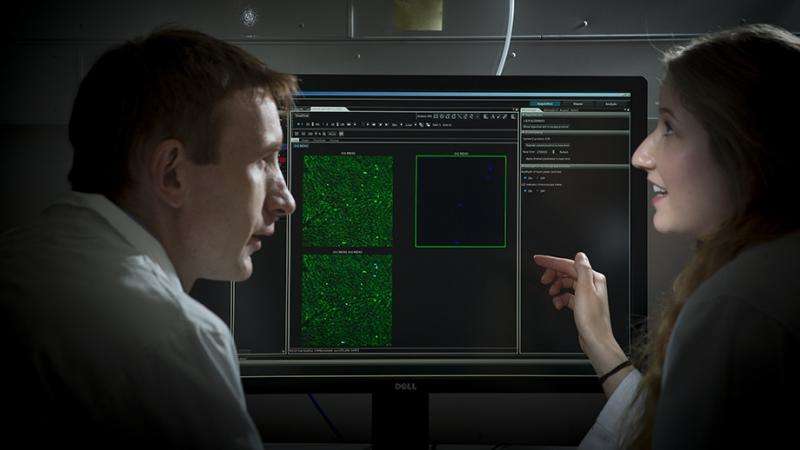Associate Professor Ian Cockburn and Hayley McNamara. Credit: Stuart Hay, ANU
In a discovery that could aid malaria vaccine research, scientists led by The Australian National University (ANU) have tracked immune cells and discovered a key molecule that helps them to find and kill microbes that infect the liver such as malaria.
Malaria is a disease spread by mosquitoes that kills around 500,000 people every year, mainly in tropical countries in sub-Saharan Africa and the South Pacific.
Lead researcher Hayley McNamara, a PhD scholar from The John Curtin School of Medical Research (JCSMR) at ANU, said the findings helped answer a mystery about the work of T-cells, which are a type of immune cell that look for infection throughout the body.
"We know T-cells can protect against most infections, what we still don't fully understand is how these T-cells find the rare cells infected with viruses or parasites like malaria - a needle in a haystack problem if you like," Ms McNamara said.
"In our research we've been able to see that some of the T-cells are specialists, able to patrol the liver hunting down infections like malaria parasites.
"We've found that without a key molecule called LFA-1, that cells don't work - they can't move quickly and can't kill malaria parasites effectively."
ANU Associate Professor Ian Cockburn said that because the T-cells were so effective at finding malaria parasites they could be a component of future vaccines.
"What we want to do is understand how to make a vaccine that induces these types of immune cells. There are vaccines in clinical trials that work by inducing antibodies, adding a T-cell component would create stronger immunity by arming different parts of the immune system".
ANU researchers are currently working with collaborators in Australia and internationally to find a vaccine approach to make this type of T-cell.
More information: H. A. McNamara et al. Up-regulation of LFA-1 allows liver-resident memory T cells to patrol and remain in the hepatic sinusoids, Science Immunology (2017). DOI: 10.1126/sciimmunol.aaj1996
Journal information: Science Immunology
Provided by Australian National University






















